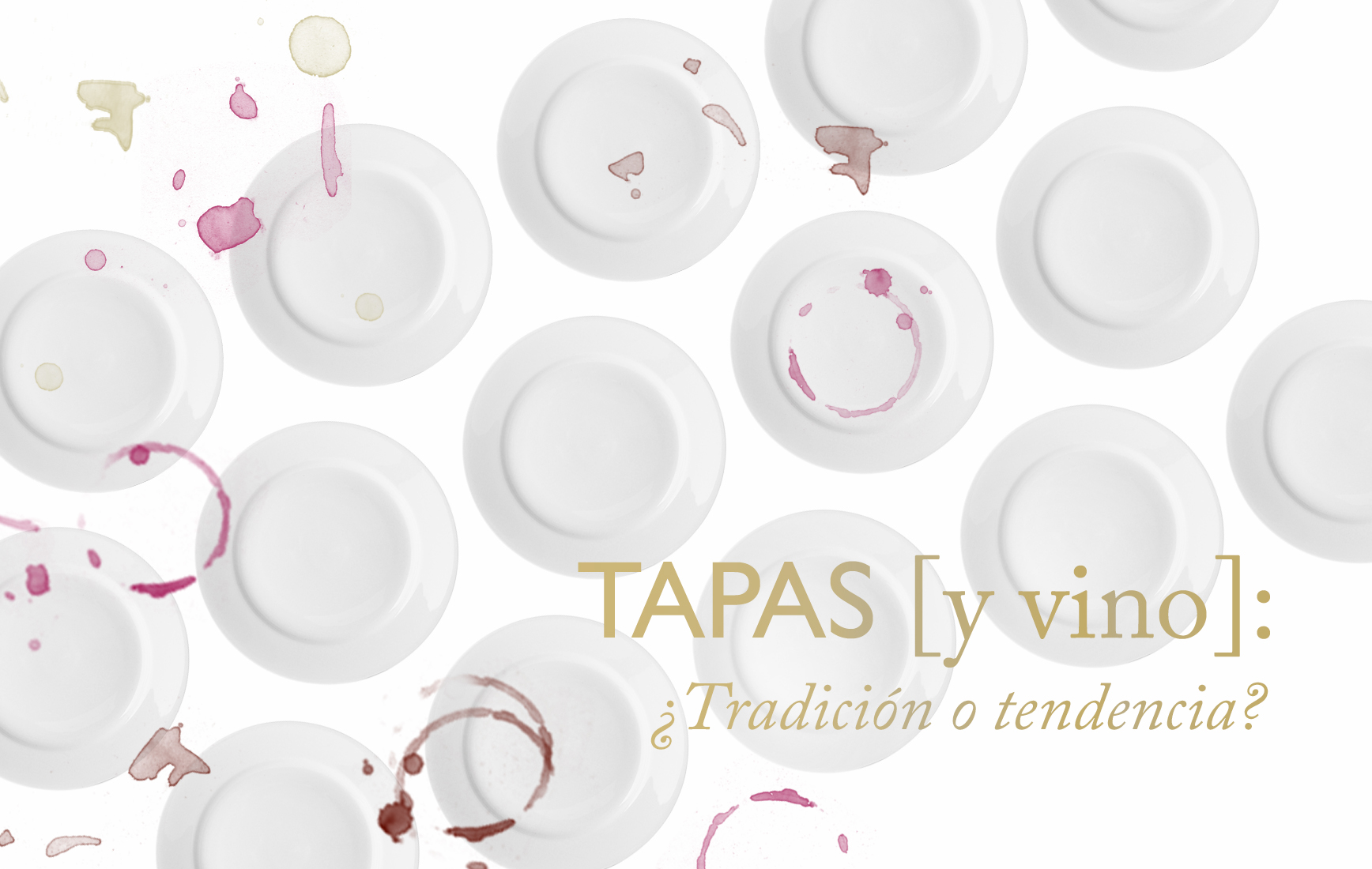Tapas [& Wine]: Tradition or trend?

If we travel around this big wide world of ours and ask people what food item comes to mind when they think of Spain, we might expect most of them to say “paella.” And that was definitely true a few years ago, but something has changed. Take a moment during your summer travels to look around, and you will see how in practically every big city, on every continent, tapas restaurants are popping up among their many Italian and Chinese counterparts.
When it comes to the origin of tapas, several stories take us back to the Middle Ages. Others only as far as the 19th century, but they all coincide when it comes to the primary reason: to protect the wine from dust and insects. In other words, not only is wine inherent to the invention of tapas, it is their very reason for being.
If we take a trip around the different parts of Spain, we will come across different types of tapas. The most interesting thing about them, however, is that they also allow us to discover regional wines, because the tapa is a popular dish born in bars, inns and taverns where the “locally-sourced” philosophy currently so in vogue has always been common practice.
These days, the rise of the “gastrobar” has elevated the tapa to the level of high cuisine with bite-sized or finger-food-style culinary creations. When seeking the true essence of tapas and the Spanish verb tapear (to tapa), however, the best bet is still a popular traditional establishment.
Wines to go with Tapas
Traditionally, the wine served with tapas was either a white or a very young red (cosecheros or wines released the same year they are harvested) with little to no aging. These wines are fruitier and lighter in character. The manzanillas and finos (Andalusian sherries) that are mainly found in the south of Spain constitute a separate chapter.
The reason why these kinds of wines are an ideal match for tapas is very simple: they are perfect wines to drink by the glass. They are less structured, less complex and generally lighter—plus, they have the great advantage of pairing well with a wide variety of food without causing a clash of any kind. As a sommelier, I have no qualms about playing around a bit with the serving temperature of the reds and cooling them ever so slightly.
Parelladas, Verdejos and Albariños (Viña Sol, Verdeo or Pazo das Bruxas) are fresh whites that are always pleasant, but a fresh, partially aged Chardonnay like Atrium Chardonnay is also an excellent choice.
Tempranillos, Garnachas and Merlots—depending on how they are made—go very well with tapas. My recommendations: Celeste Roble (D.O. Ribera del Duero) and Coronas (D.O. Catalunya)—aged three and nine months, respectively—as well as our crianza wine Altos Ibéricos (D.O.C Rioja) are a good match for cold and hot tapas.
Within the traditional Garnacha range, a wine like Sangre de Toro (D.O. Catalunya) can quickly become the star attraction at a tapas get-together with friends. For those who prefer round, smooth wines, they will find the perfect ally—even for fish tapas—in an Atrium Merlot (D.O. Penedès), briefly aged and served at 15ºC.
And lets not forget rosé wines like De Casta (D.O. Catalunya), which, thanks to their freshness, make for a cheerful and summery wine to enjoy by the glass.
Pintxos, montaditos, banderillas, llesques, cazuelitas: the tapas from different parts of Spain go by a wide variety of names. And now they are winning over palates around the world, not simply with their flavor, but because of what they represent—the perfect excuse to share a glass of wine and “a bite to eat” with others. Conviviality has won out over the individuality found in the anglophone concept of “fast food.”
